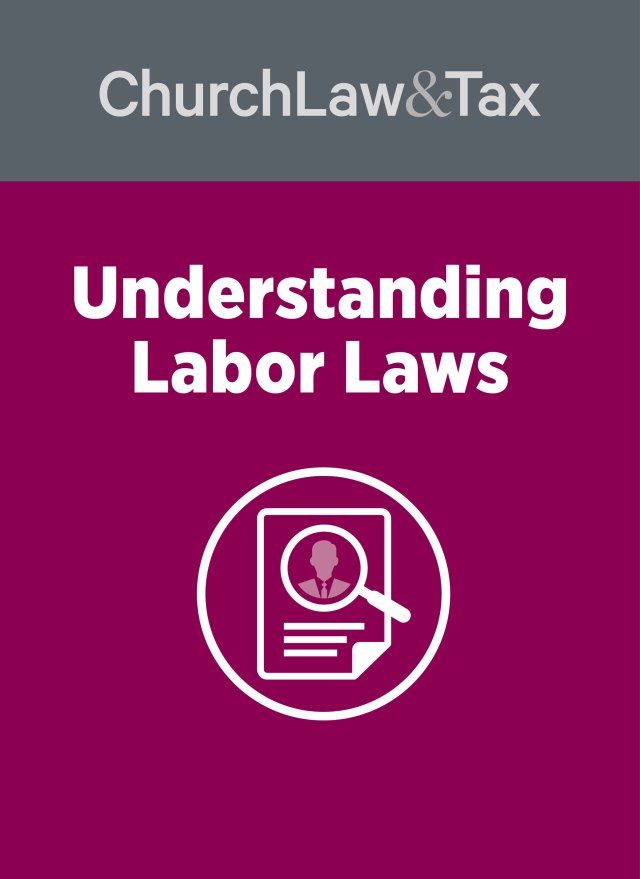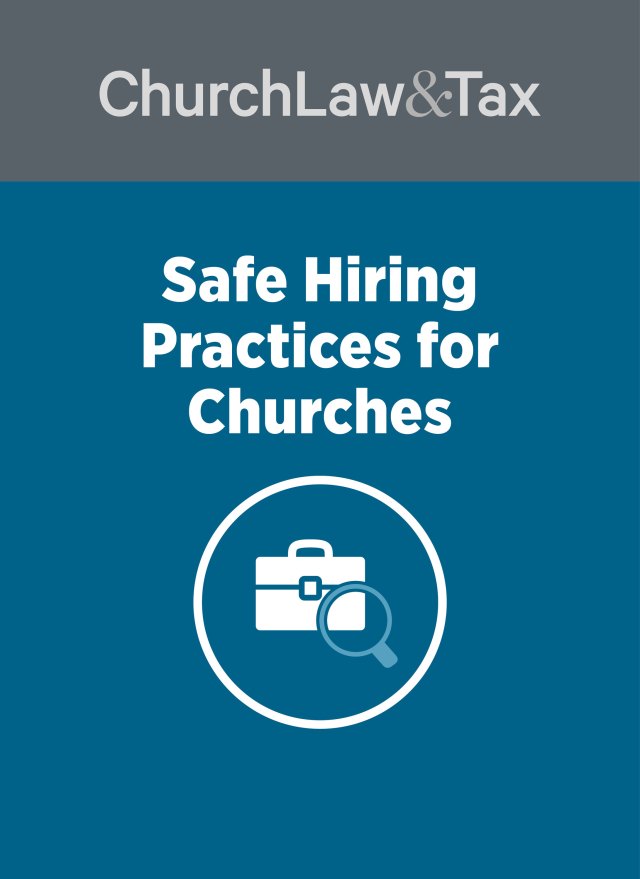• Key point 4-04. Many states recognize “invasion of privacy” as a basis for liability. Invasion of privacy may consist of any one or more of the following: (1) public disclosure of private facts; (2) use of another person’s name or likeness; (3) placing someone in a “false light” in the public eye; or (4) intruding upon another’s seclusion.
• Key point 8-10. The federal Americans with Disabilities Act prohibits employers with at least 15 employees, and that are engaged in interstate commerce, from discriminating in any employment decision against a qualified individual with a disability who is able, with or without reasonable accommodation from the employer, to perform the essential functions of the job. Accommodations that impose an undue hardship upon an employer are not required. Religious organizations may give preference to nondisabled members of their faith over disabled persons who are members of a different faith.
Invasion of Privacy
Americans with Disabilities Act
* An Ohio court ruled that a church could be sued for discrimination and breach of contract as a result of its termination of a music director who suffered from severe depression, and also could be sued for invasion of privacy as a result of an announcement on the church’s website disclosing the music director’s psychological disorder and that he was being hospitalized for it. In 1994 a church appointed a man (“Bruce”) as its Director of Music Ministries. The employment contract allowed for termination of the agreement by either party with 60 days’ notice. Prior to being hired by the church, Bruce had suffered from, and had received treatment for, depression since 1985. After being hired, Bruce advised a church administrator that he suffered from depression. In 1999 Bruce was admitted to the hospital for treatment of his depression. During the period of his hospitalization, the church placed him on a medical leave of absence, and an acting music director was appointed. Throughout Bruce’s hospitalization, he remained in contact with several members of the church, including the senior pastor. During a conversation with the senior pastor, Bruce mentioned that he would be able to return to work in January 2000. However, by the end of January Bruce remained hospitalized for depression. In March 2000, Bruce was transferred to another hospital following a suicide attempt. He informed the church that he would be able to return to work on April 1, 2000, but, again, was unable to return to his job because of continued hospitalization.
During this extended medical leave, the church paid Bruce his full salary for the first six weeks. In addition, the church provided a voluntary payment to him to help supplement his disability benefits. On April 5, 2000, the senior pastor delivered to Bruce, who was still under treatment for his depression, a termination letter. The letter read, in part:
After many thoughts had been expressed, the personnel committee unanimously came to the decision albeit with much heaviness of heart for you, for themselves, for the choirs, and for the whole congregation that you are not physically or mentally able at this time to continue in the position in which you have so distinguished yourself. We believe it would be unfair to you as well as to the congregation to attempt something we feel your current health situation renders you incapable of doing.
Bruce remained in the hospital until the next day, April 6, 2000, at which time he was cleared by his doctor to return to work. A few days later, the church posted an article on its website that contained the following statements:
We have good news for you! Bruce is returning to the church after a long medical leave of absence. Since the summer of last year, Bruce has been treated for bi-polar illness, a condition which at times has resulted in serious depression for him. Various therapies and medications have been tried, and finally, after much experimentation, his health has improved considerably. For that we are all very happy.
After Bruce’s discharge from the hospital, he was visited at his home by an attorney who served as the chairman of the church board. During this visit, the attorney handed Bruce a severance agreement, which he advised was to replace the termination letter of April 5, 2000. The severance agreement terminated Bruce’s relationship with the church and provided six month’s severance pay and insurance coverage for an additional year. Bruce was advised that he should consult an attorney before signing the severance agreement.
On April 10, 2000, legal counsel for the church prepared and delivered a letter to Bruce’s attorney finding Bruce’s failure to approve the severance agreement as a rejection of the offer and, therefore, welcoming Bruce to return to his full-time position as the Director of Music Ministries at the church. On May 12, 2000, a meeting was held between the parties involved. At this meeting, Bruce requested certain accommodations be made before he would return to his position at the church. The requested conditions included: (1) That he receive a letter from the personnel committee describing the circumstances that preceded the April 5 termination letter; (2) that there be some official communication to the congregation that he will return to work, that his leave of absence was not due to performance, but rather was caused by a medical condition; (3) that the senior pastor be relieved of his duties, or, in the alternative, that his contact with Bruce be limited or restricted; and (4) that Bruce receive a lump sum payment of up to two years salary.
A few days later, the attorney for the church wrote to Bruce’s attorney rejecting Bruce’s counteroffer regarding his return to work. The letter stated that “the conditions Mr. Bruce has placed on his return to work are unacceptable, especially his effort to dramatically change his employment environment and his request for financial compensation. The church is still hopeful that Mr. Bruce will return to his full duties as the Director of Ministries. To that end, the church reiterates its unconditional offer to Mr. Bruce to return to work.”
Bruce rejected the church’s unconditional offer to return to work without the requested accommodations. He claimed that there were vicious rumors being circulated around the church that he was a pedophile, and he was concerned that if he returned to the church his work would be “unreasonably scrutinized” and he would be fired for his inability to perform all of the job functions. Based on this rejection of their offer, the church sent a letter to Bruce’s attorney stating that they interpreted Bruce’s actions to mean that he had terminated his employment, and that his personnel records would reflect that he voluntarily resigned.
Several months later, after seeing an advertisement posted on the church’s website, Bruce applied to the church for the advertised position of Director of Music Ministries. He claims that the church’s personnel committee made a decision to prevent him from being considered for the posted position.
Bruce filed a charge with the federal Equal Employment Opportunity Commission (EEOC) and a state civil rights agency claiming that the church had retaliated against him for engaging in protected conduct. In July, the EEOC issued a determination that the church had violated the Americans with Disabilities Act. Bruce also sued the church and its senior pastor for money damages as a result of the termination of his employment. A trial court dismissed Bruce’s lawsuit, and he appealed.
Discrimination based on disability
The appeals court ruled that the trial court should not have dismissed Bruce’s claim that he had been terminated by the church because of his disability. It noted that for Bruce to prove discrimination, he had to establish a “prima facie case” by proving (1) that he was disabled, (2) that he was terminated at least in part because of his disability, and (3) he could perform the essential functions of the job with or without a reasonable accommodation by the church. The court noted that the evidence supported all three of these factors. First, Bruce was disabled. It noted that depression can be a disability if it substantially limits one or more major life activities. Second, the church’s termination letter clearly based the decision to terminate Bruce on his disability. Third, the court noted that Bruce had asked the church to make several accommodations before he could return to his job. The church never established that these accommodations would impose an undue hardship on it. Since Bruce met the requirements of a prima facie case, the case should not have been dismissed.
Invasion of privacy
The appeals court concluded that the trial court should not have dismissed Bruce’s claim that the church “invaded his privacy” by printing a notice on the church website (quoted above) concerning his hospitalization and medical condition. The court observed, “The right of privacy is the right of a person to be let alone, to be free from unwarranted publicity, and to live without unwarranted interference by the public in matters with which the public is not necessarily concerned.” The court concluded, “The comments made on the church’s website were based purely on Bruce’s private affairs, i.e. his hospitalization for depression. While he did inform those necessary persons about his condition—the pastor and a few close friends who belonged to the church—this cannot be seen as a waiver to enter his private life …. While the church’s publication could be based upon informing the congregation of Bruce’s return to the church, the inclusion of the additional personal information about his bi-polar illness could be viewed as offensive or objectionable to a reasonable person. Therefore … the trial court erred by granting summary judgment based on this claim.”
Breach of contract
The appeals court also rejected the trial court’s dismissal of Bruce’s breach of contract claim. Bruce had claimed that his employment contract with the church allowed for termination by either party with 60 days’ notice, and that the church failed to provide him with 60 days notice.
Application. This case is important for three reasons. First, it illustrates the risk that churches face when they dismiss employees who are having difficulty performing their jobs due to a disability. The court placed great weight on the church’s termination letter in which Bruce was informed that he was being terminated because his disability prevented him from performing his job. Second, as we have pointed out many times in this newsletter, several courts have applied the so-called “clergy exception” to civil rights laws to music directors, even if they are not ordained or licensed ministers. Under the clergy exception, the civil courts refuse to resolve ministers’ claims of discrimination under state or federal law, on the ground that doing so would violate the first amendment guaranty of religious freedom. Third, this case demonstrates the potential liability churches face when they publish information on their websites or in church bulletins or newsletters concerning the health condition of employees or church members. These kinds of disclosures should not be made without consent, even if the purpose is to call the congregation to pray for the individuals. Mitnaul v. Fairmount Presbyterian Church, 778 N.E.2d 1093 (Ohio App. 2002).
© Copyright 2001 by Church Law & Tax Report. All rights reserved. This publication is designed to provide accurate and authoritative information in regard to the subject matter covered.It is provided with the understanding that the publisher is not engaged in rendering legal, accounting, or other professional service. If legal advice or other expert assistance is required, the services of a competent professional person should be sought. Church Law & Tax Report, PO Box 1098, Matthews, NC 28106. Reference Code: m43 m110 c0303




